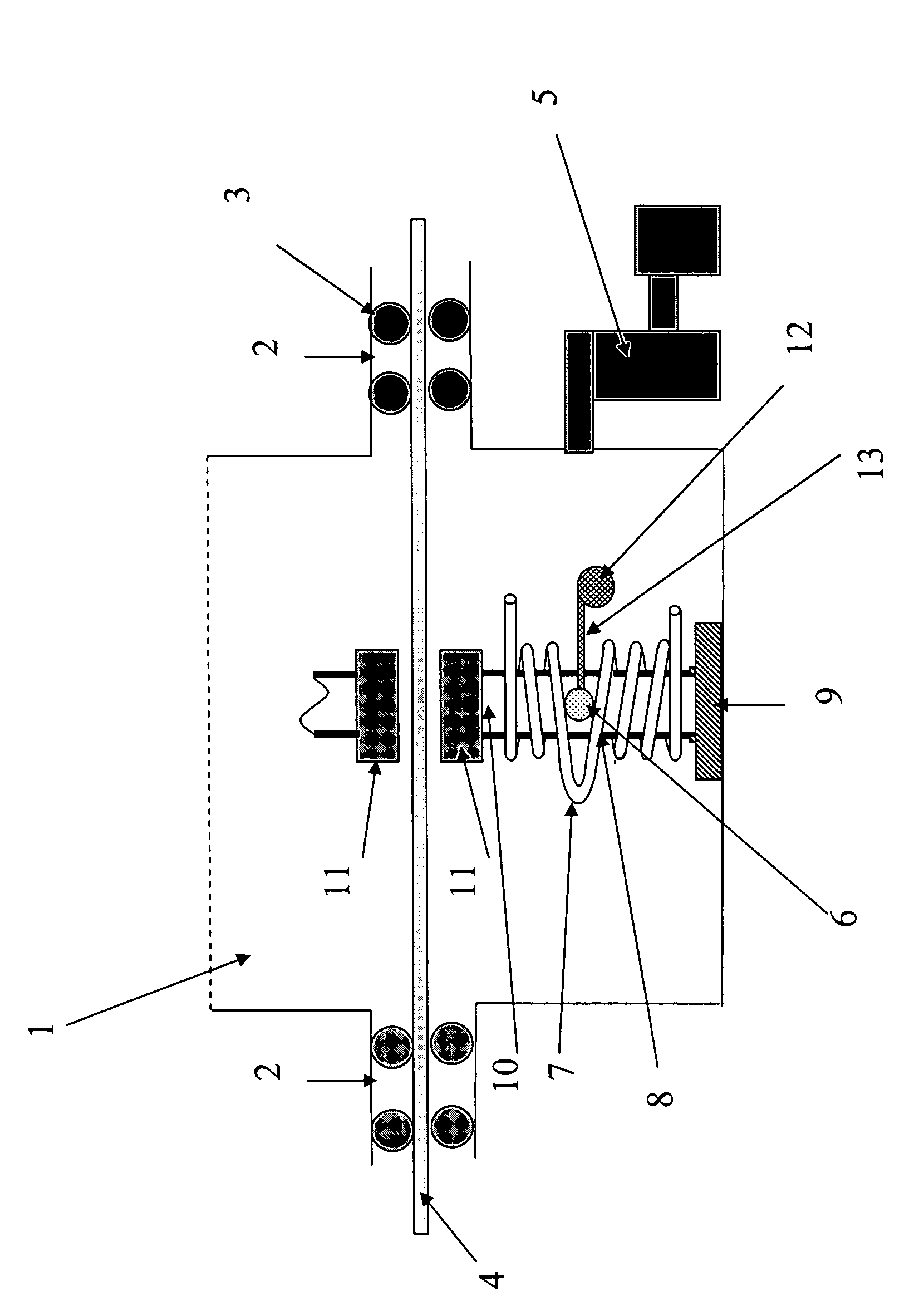Method and device for coating a substrate
a technology of coating and substrate, applied in the direction of electric/magnetic/electromagnetic heating, magnetic bodies, transportation and packaging, etc., can solve the problems of limited transfer rate, significant proportion of heat supplied loss, and limited use of ceramic crucibles
- Summary
- Abstract
- Description
- Claims
- Application Information
AI Technical Summary
Benefits of technology
Problems solved by technology
Method used
Image
Examples
Embodiment Construction
[0013] According to a first aspect of the invention, one or more of these objects are achieved by a method for coating a substrate with a layer of a material, such as a metal, to form a coated substrate. In the method a quantity of electrically conductive material is vaporized in a chamber providing a space with a low background pressure and energy is supplied to the material which is to be vaporized in order to vaporize this material. In this method the material which is to be vaporized, while it is being vaporized, is kept floating, without support, in the space and is enclosed in an alternating electromagnetic field, and in which method the alternating electromagnetic field is generated with the aid of a high-frequency alternating current. Typically the chamber communicates with a vacuum pump to achieve the low background pressure.
[0014] Keeping the material which is to be vaporized floating without support in the space means that it is no longer necessary to use a copper or cer...
PUM
| Property | Measurement | Unit |
|---|---|---|
| Power | aaaaa | aaaaa |
| Current | aaaaa | aaaaa |
| Frequency | aaaaa | aaaaa |
Abstract
Description
Claims
Application Information
 Login to View More
Login to View More - R&D
- Intellectual Property
- Life Sciences
- Materials
- Tech Scout
- Unparalleled Data Quality
- Higher Quality Content
- 60% Fewer Hallucinations
Browse by: Latest US Patents, China's latest patents, Technical Efficacy Thesaurus, Application Domain, Technology Topic, Popular Technical Reports.
© 2025 PatSnap. All rights reserved.Legal|Privacy policy|Modern Slavery Act Transparency Statement|Sitemap|About US| Contact US: help@patsnap.com


